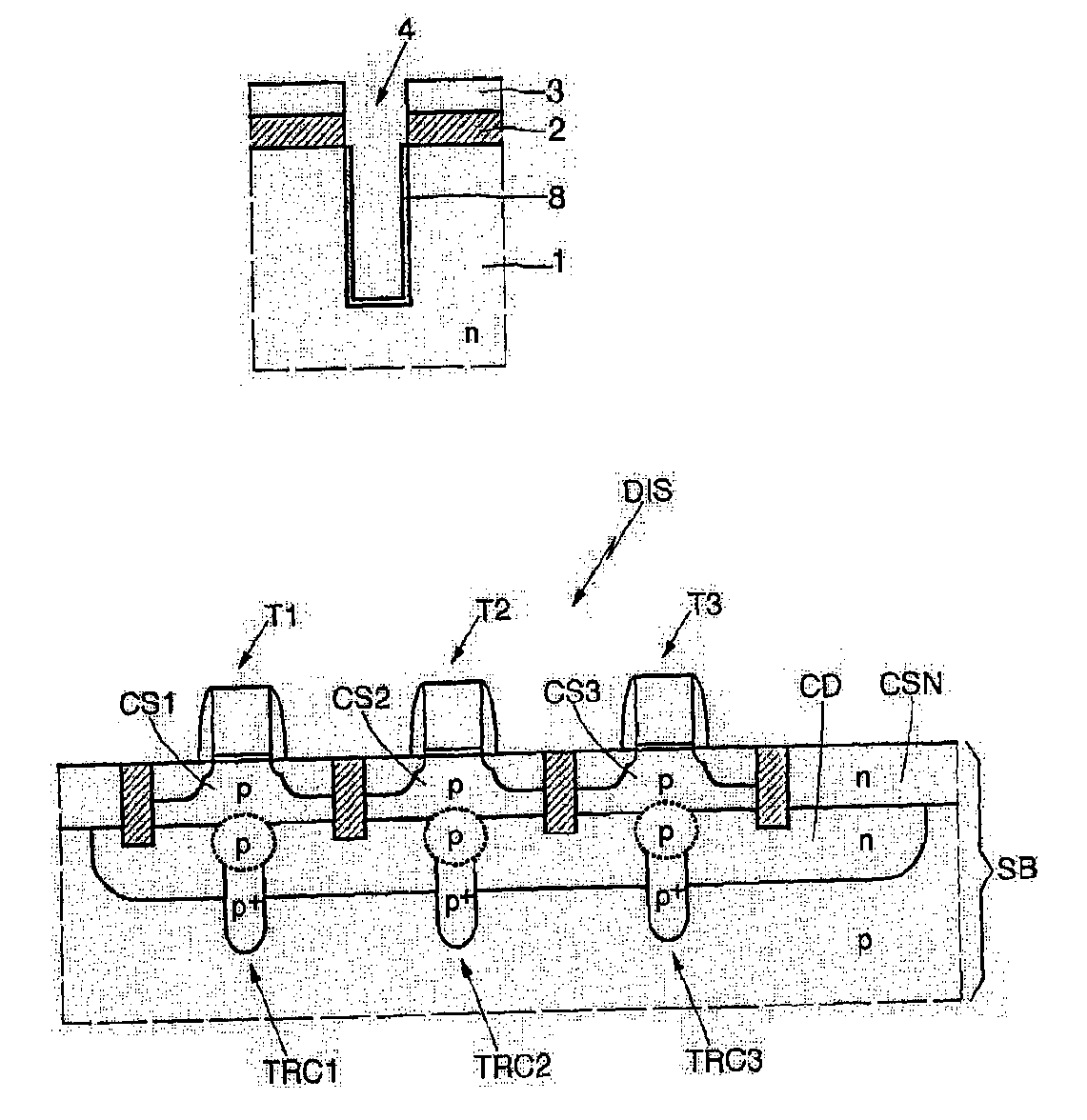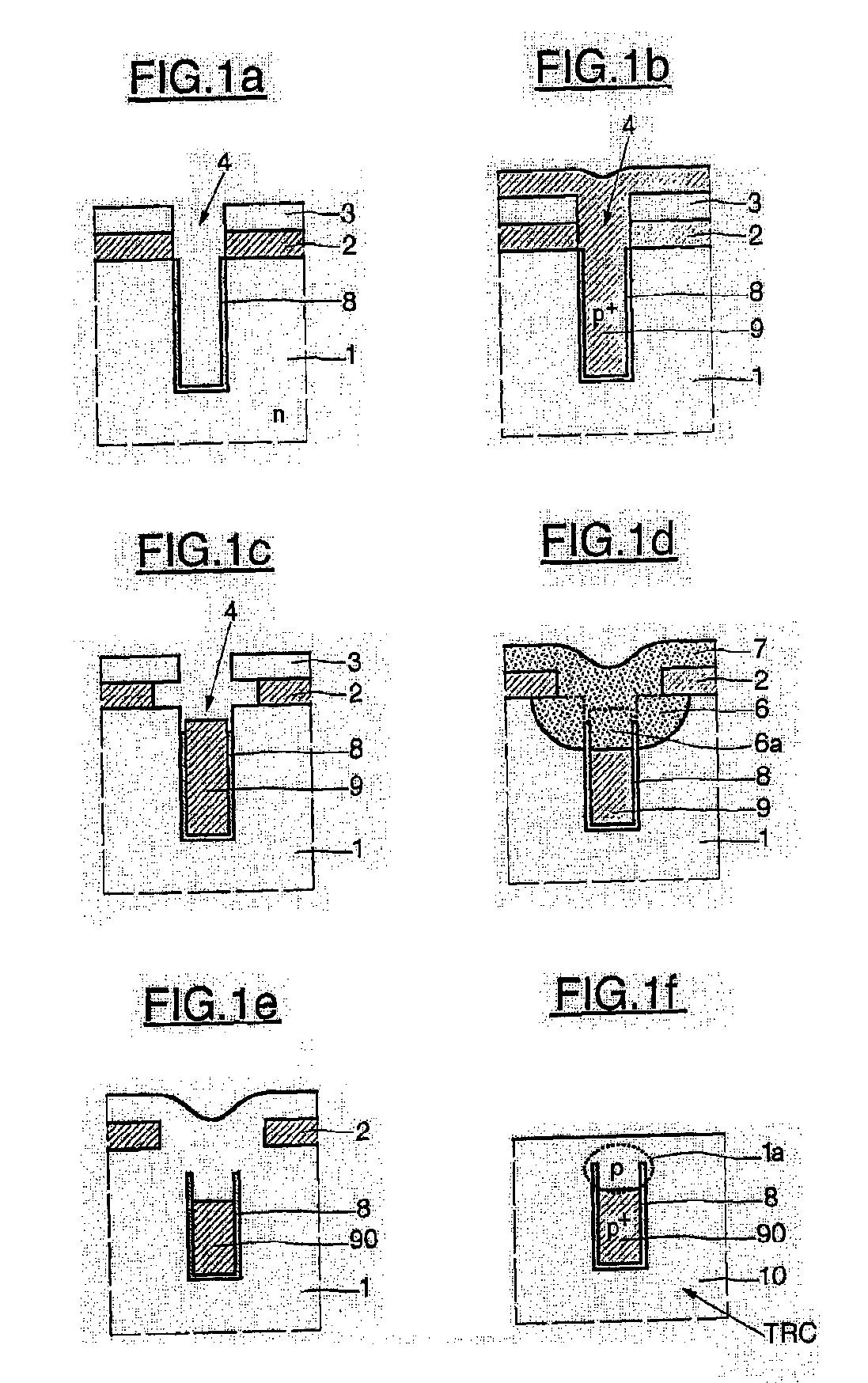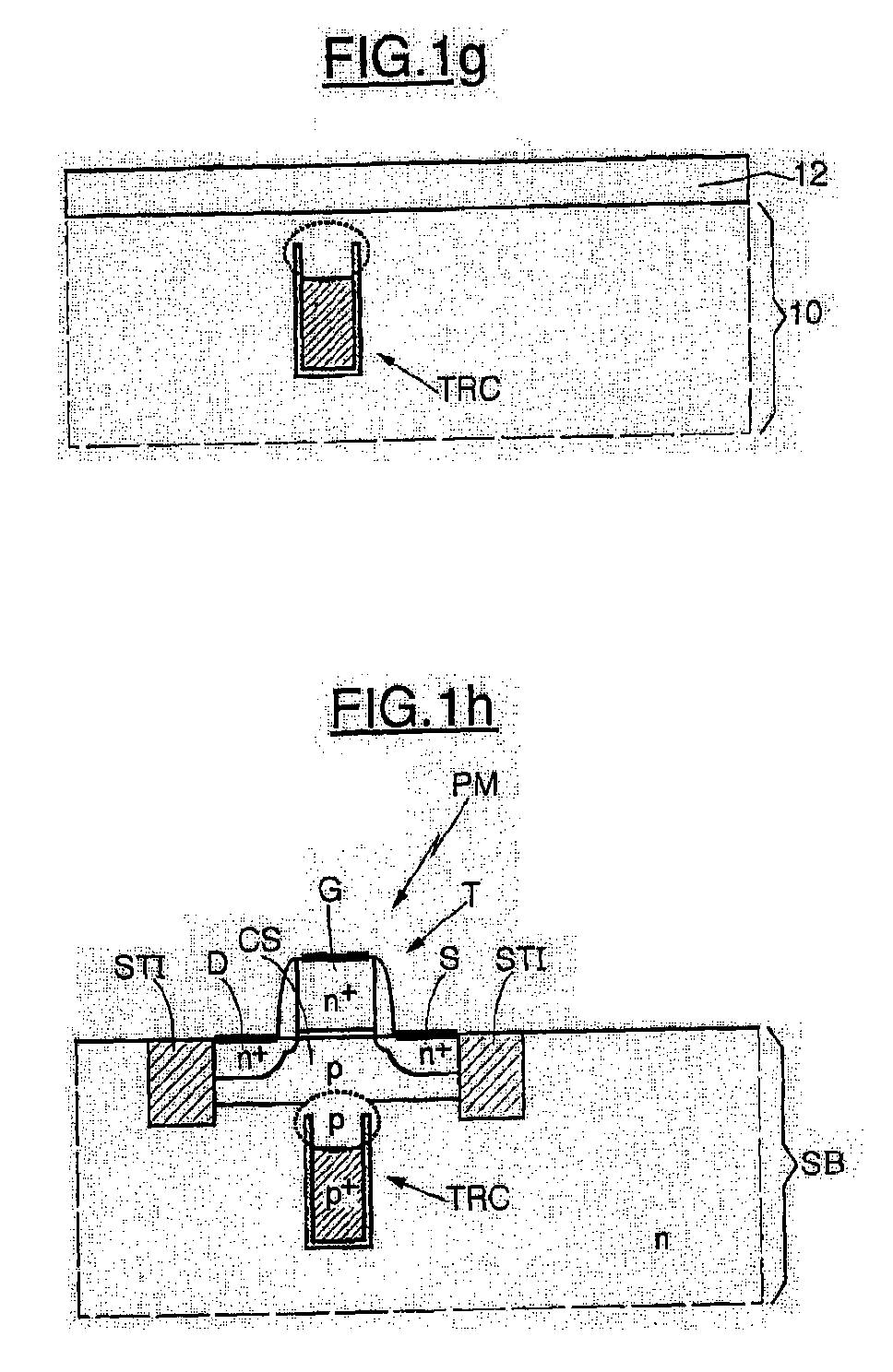Integrated circuit and fabrication process
a technology of integrated circuits and fabrication processes, applied in the field of analog devices, can solve the problems of low capacitor capacitance, inability to differentiate several charge levels of capacitors, and inability to stabilize capacitors,
- Summary
- Abstract
- Description
- Claims
- Application Information
AI Technical Summary
Benefits of technology
Problems solved by technology
Method used
Image
Examples
Embodiment Construction
[0045] The starting substrate of the process of the invention, or the initial substrate, is illustrated in FIG. 1a and in this case comprises an elementary trench. In this case, the initial substrate 1 is n-doped. The elementary trench may be made, according to one implementation of the process of the invention, by firstly depositing a layer of silicon oxide 2 on the initial single-crystal silicon substrate 1. The thickness of this layer 2 may vary between 0.01 micron and 1 micron, and is preferably about 2000 Å.
[0046] Next, a layer of silicon nitride 3 is deposited on the oxide 2. The thickness of this layer 3 may also vary between 0.01 micron and 1 micron, and is also preferably about 2000 Å.
[0047] Next, first of all the nitride 3 and the oxide 2, then finally the single-crystal silicon of the substrate 1 are etched in a conventional manner using a photolithography operation, in order to form the elementary trench 4.
[0048] The elementary trench 4 has a depth of about 6 μm and a...
PUM
 Login to View More
Login to View More Abstract
Description
Claims
Application Information
 Login to View More
Login to View More - R&D
- Intellectual Property
- Life Sciences
- Materials
- Tech Scout
- Unparalleled Data Quality
- Higher Quality Content
- 60% Fewer Hallucinations
Browse by: Latest US Patents, China's latest patents, Technical Efficacy Thesaurus, Application Domain, Technology Topic, Popular Technical Reports.
© 2025 PatSnap. All rights reserved.Legal|Privacy policy|Modern Slavery Act Transparency Statement|Sitemap|About US| Contact US: help@patsnap.com



